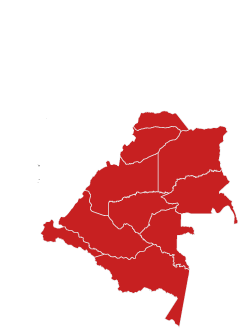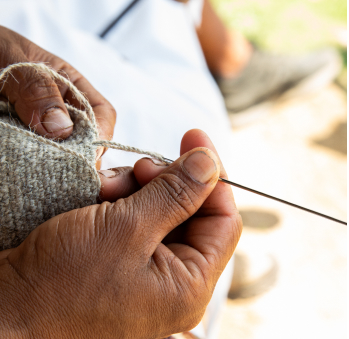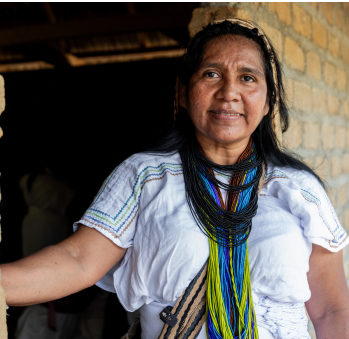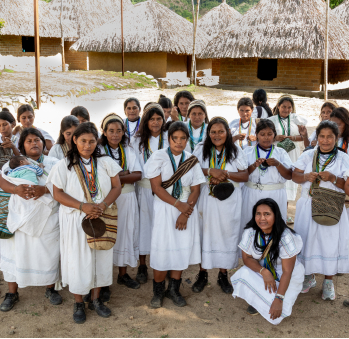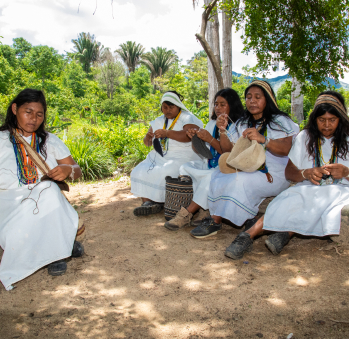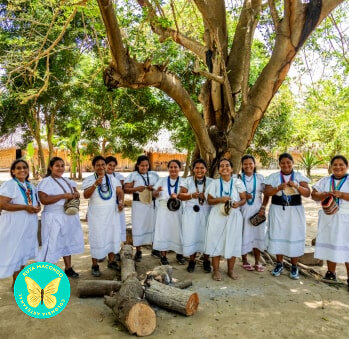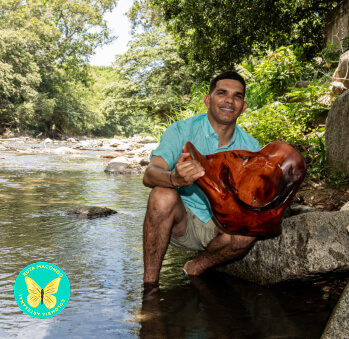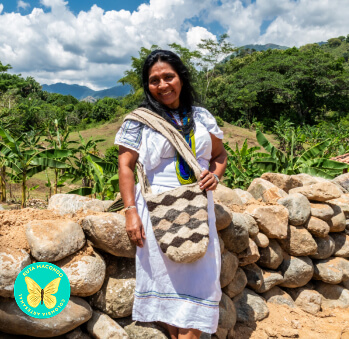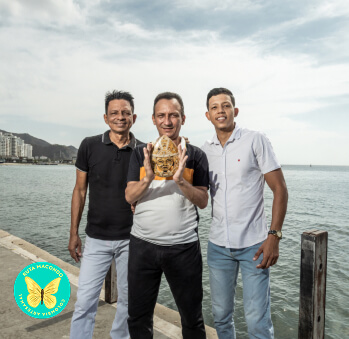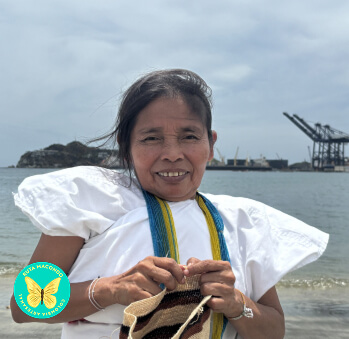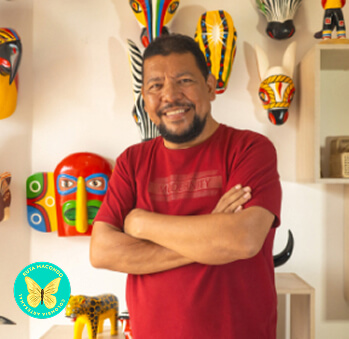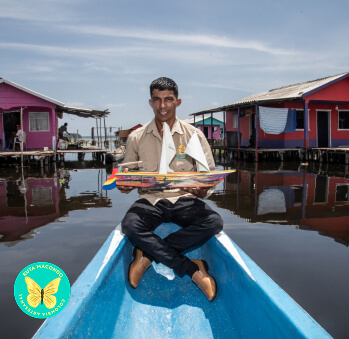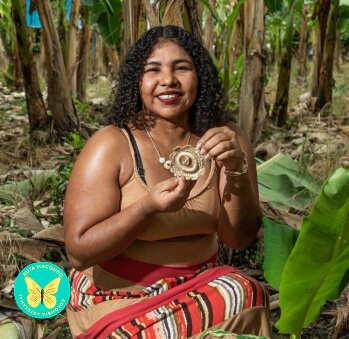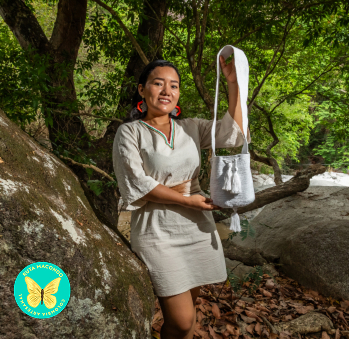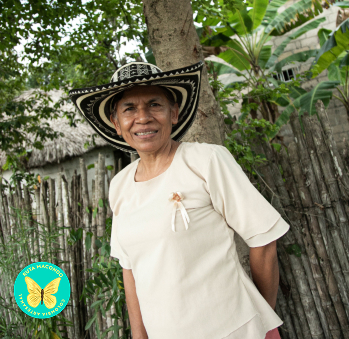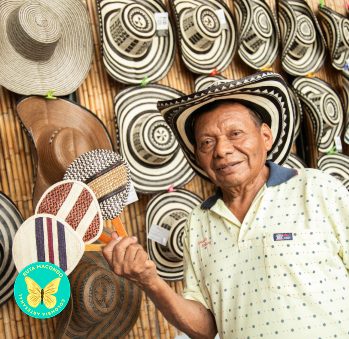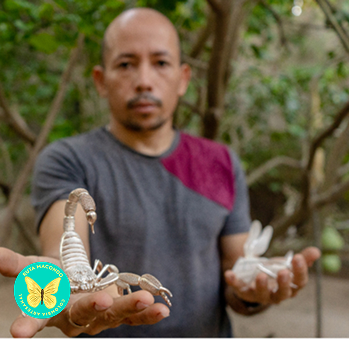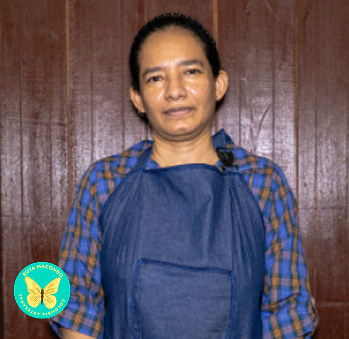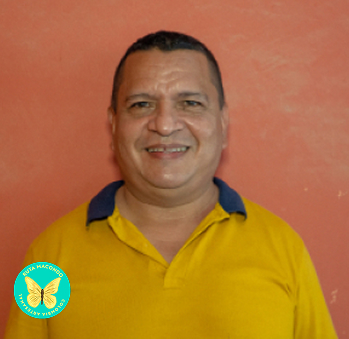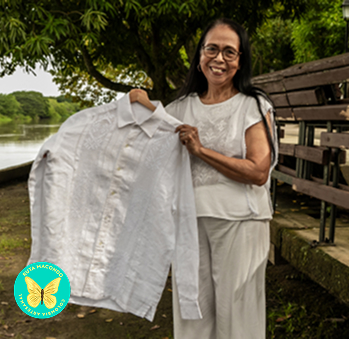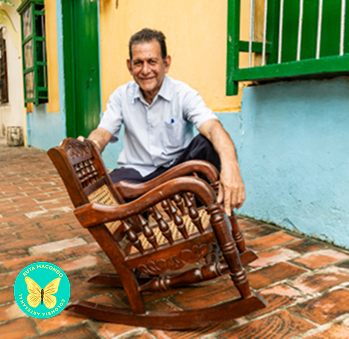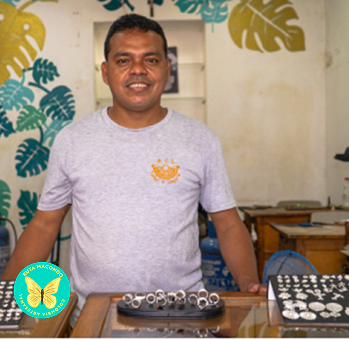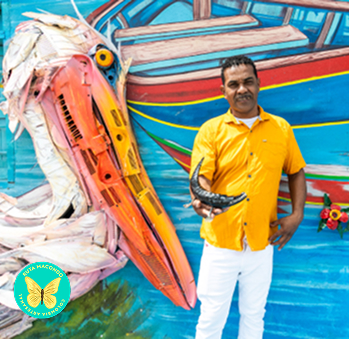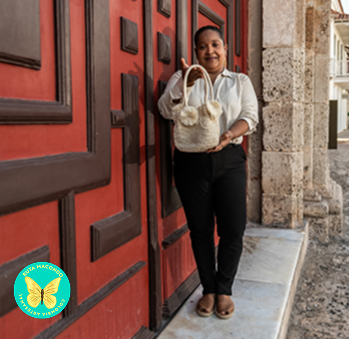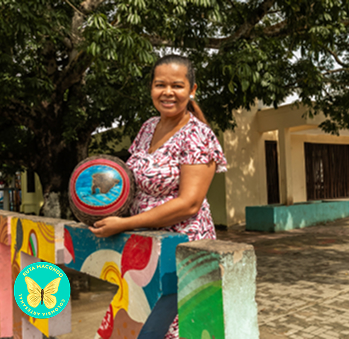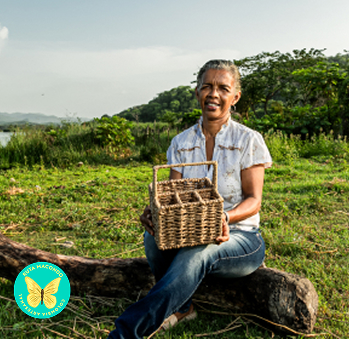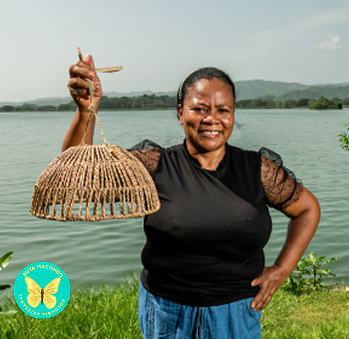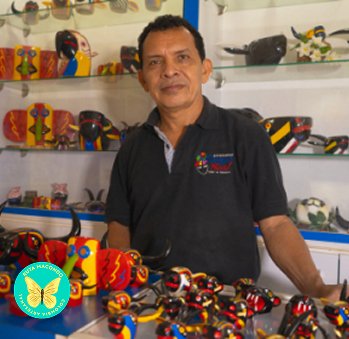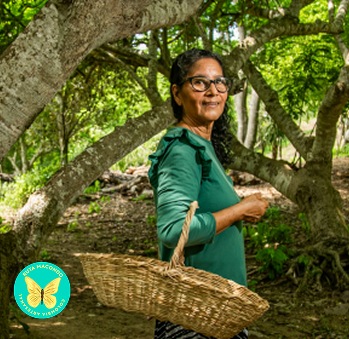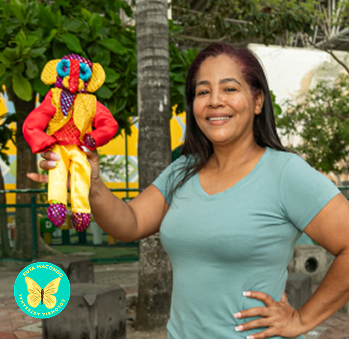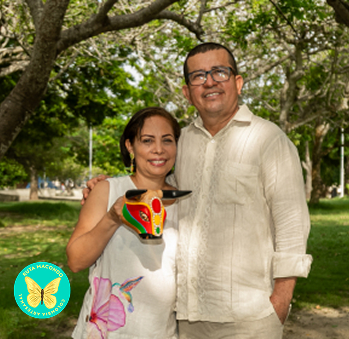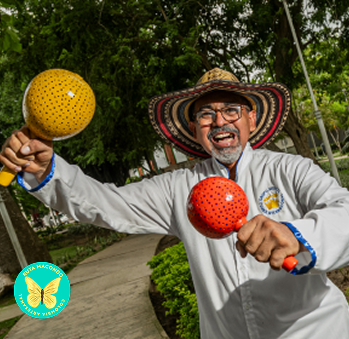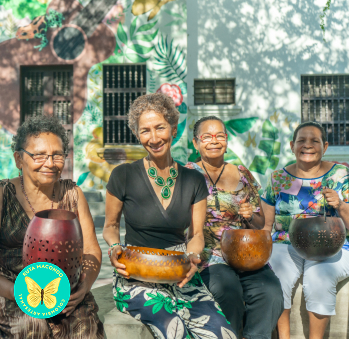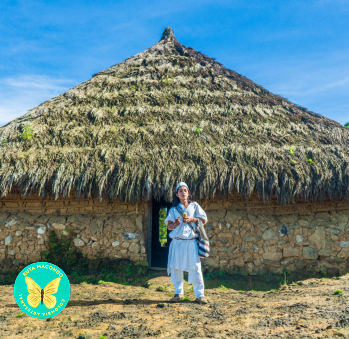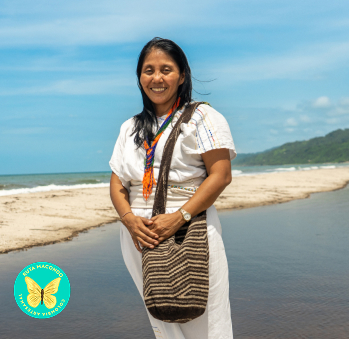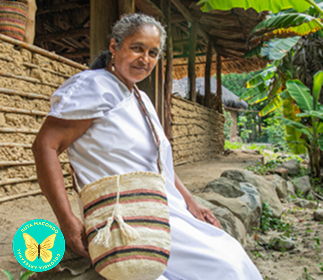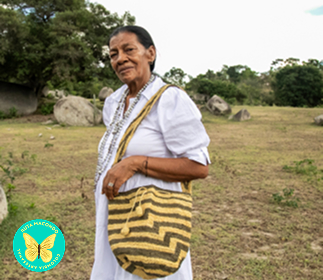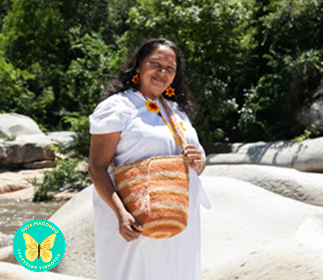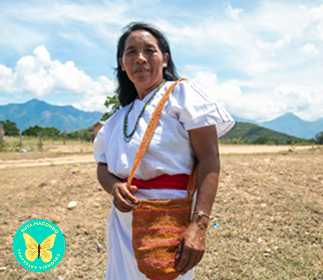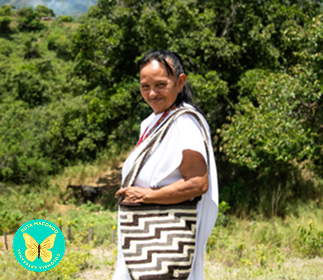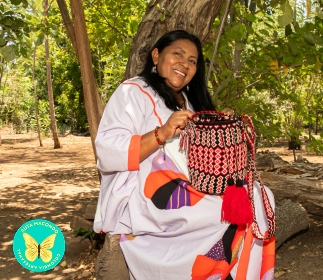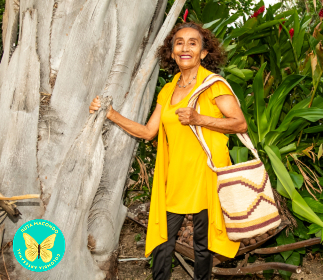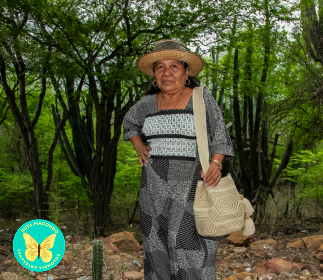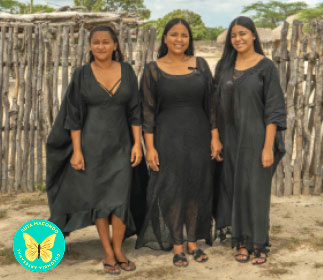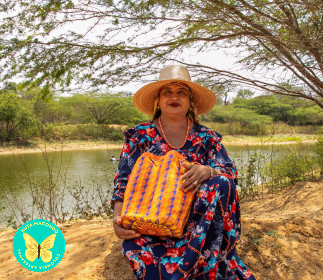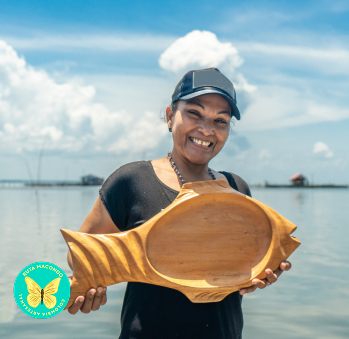Judith Torres
Workshop: Kunsamo
Craft: Weaving
Trail: Macondo Route
Location: Santa Marta, Macondo
“Judith Torres speaks on behalf of her Arhuaco community—particularly the 23 settlements scattered across the department of Magdalena. This is why her voice is generous with explanations and rich in description. They are many, and their way of life is quite different from that of their Arhuaco relatives in Cesar due to the vast distances that separate them: they live in places such as Fundación, Ciénaga, Río Palomino, Don Diego, and Aracataca, from the sea’s shore to the deepest reaches of the Sierra Nevada de Santa Marta. And yet, she proudly says, they have succeeded in forming an organized community, one determined to grow stronger and more autonomous with each passing day.
Leadership is in her nature. She says it’s because every leader walks alongside a woman who lifts him and makes him who he is—just like she does with her husband, Rogelio Mejía, an Indigenous authority. Together, they dream of a better future for their people and of protecting the nature that gives them life. Their hope is that by respecting the land, they’ll find new sources of well-being. From Asoarhuaco, Judith has helped uplift and bring visibility to the Arhuaco people of Magdalena. They are strengthening their crops and promoting traditional crafts as another source of income deeply rooted in their cosmogony.
The organization emerged out of the need to provide their people with tools to prevent being left behind when it came to earning a living from their work. Tired of dealing with intermediaries who kept the profits of their high-quality raw materials, they decided to build their own businesses. Today, over six hundred Arhuaco coffee growers cultivate Arabica and Caturra varieties—specialty coffees now gaining a name in the market. They’re also reviving sugarcane crops, not only to sweeten their own diets but to bring panela from the Sierra to Colombian tables. And they’ve begun cultivating cacao and avocado, too. Because they’re so widely dispersed, most of their farming happens around their own homes, but in larger settlements, they’re also embracing collective farming.
Judith speaks with pride because their plan is bearing fruit. The more than 1,000 members of the association are already seeing improvements in their quality of life. They’ve created a functioning system for collecting and selling their products. Beyond the economic side, Judith coordinates the community’s artisanal development. She knows that an Arhuaco woman, like so many Indigenous women across Colombia, is born weaving. Their mothers wove while their daughters were still in their womb, telling them the stories of their ancestors with arms moving as gracefully as a boat crossing a river. That’s how their stories were passed down, so when they pick up a needle, it’s only natural that the thread follows on its own.
But she’s also aware that something so deeply rooted in tradition doesn’t always align with market expectations. That’s why they’ve focused on training in design and marketing. They know that their legacy will endure only if it becomes sustainable—and that the stories woven in ovejo wool, cotton, and fique will continue to be told only if they can earn a decent living from it. Their work honors the sacred nature of cotton, telling stories through the beauty of their symbols—like the “path of the horse,” a pattern of interwoven labyrinths that represents the spirit’s mysterious journey.
To complete that journey, they invite you to visit the Sierra through their eyes. To discover their landscape, their food, their beliefs, and their way of life. Just say what you’d like to learn, and they’ll gladly welcome you. Judith herself will take care of it.”
Craft

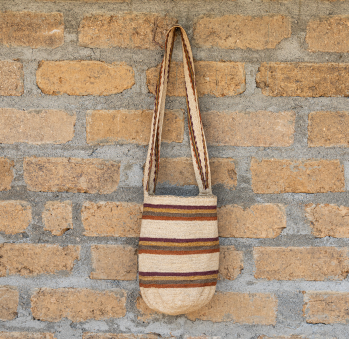
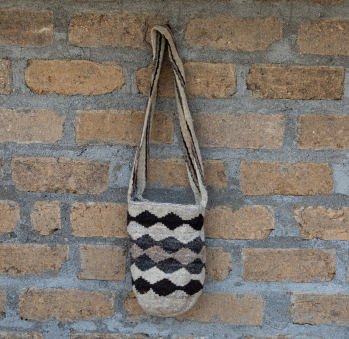
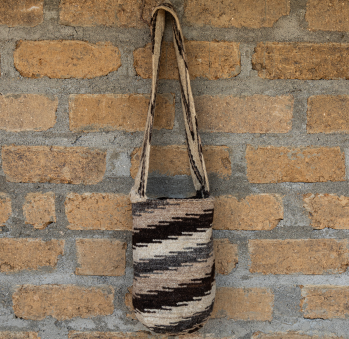

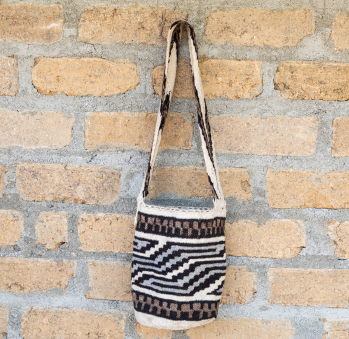


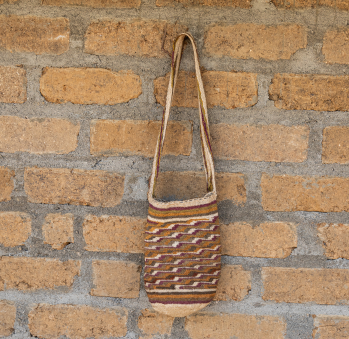









Artisans along the way
Artisans along the way
No puede copiar contenido de esta página

